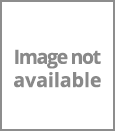Speak directly to the analyst to clarify any post sales queries you may have.
Antimicrobial textiles are rapidly reshaping B2B supply chains as industries seek innovative solutions for hygiene, user safety, and sustainability. Senior executives looking for differentiation are turning to these advanced textiles to meet rigorous standards and gain competitive advantage across key verticals.
Market Snapshot: Antimicrobial Textiles Market Growth and Trends
The Antimicrobial Textiles Market grew from USD 14.35 billion in 2024 to USD 15.34 billion in 2025, with projections indicating continued growth at a CAGR of 7.45% to reach USD 25.51 billion by 2032. Expansion in this sector is driven by a global embrace of high-standards in hygiene practices and demand for extended product lifespans. Healthcare, hospitality, sports, and residential markets are at the forefront, responding to increasingly stringent health and safety regulations. These trends reinforce the centrality of antimicrobial textile technologies as organizations focus on durability, compliance, and customer wellbeing in diverse environments.
Scope & Segmentation
This report delivers detailed analysis across major segments, technological innovations, and geographic trends shaping the antimicrobial textiles industry.
- Active Agent Types: Includes bio-based agents, metal-based agents such as copper, silver, and zinc, plus synthetic organic agents like polyhexamethylene biguanide, quaternary ammonium compounds, and triclosan. Each technology offers distinct performance profiles and compatibility with different market needs.
- Material Types: Covers blends, natural fibers (cotton, hemp, silk, wool), and synthetic fibers (nylon, polyester, rayon), reflecting sustainability goals and varying end-user demands.
- Functionality: Encompasses antibacterial, antifungal, and antiviral capabilities, enabling broader protection across application areas.
- Distribution Channels: Includes offline retail and growing online retail platforms, enhancing industry accessibility and supply chain diversification.
- End-User Sectors:
- Healthcare (hospital textiles, surgical textiles)
- Hospitality (hotel linen, restaurant table covers)
- Residential (home furnishings, upholstery)
- Sports & Active Wear (active footwear, sports apparel)
- Regional Coverage: Extensive global reach covering Americas (North America, Latin America), Europe, Middle East & Africa, and Asia-Pacific, including all principal economies driving demand and regulatory benchmarks.
- Key Companies Covered: Aditya Birla Group, Apex Mills Corporation, Balavigna Mills, Beijing Konfitex Technology, Cotton Incorporated, Emes Textiles, HeiQ Materials, Herculite Products, Indorama Ventures Fibers Germany, LifeThreads, Milliken & Company, Mollyflex, Rajshree Group of Industries, Stafford Textiles, Sunny Special Dyeing & Finishing, Swicofil, Teijin Limited, Tiong Liong Corporation, Toray Industries, Toyobo.
Key Takeaways
- Antimicrobial textiles mitigate risks of cross-contamination and support safer environments across healthcare, hospitality, and sports applications, making them fundamental for organizational risk management.
- Advancements such as nanomaterial integration and use of plant-derived agents enhance fabric function while maintaining reduced agent concentrations for optimized performance and resource efficiency.
- Adoption of sustainability initiatives is accelerating, with greater emphasis on bio-based ingredients, life cycle assessment, and circular manufacturing to align with evolving customer and regulatory expectations.
- Heightened scrutiny on regulatory compliance and transparent labeling is driving more rigorous product validation, strengthening trust among institutional buyers and end-users alike.
- Strategic alliances among manufacturers, chemical formulators, and research entities promote faster innovation cycles and support better supply chain adaptability amid shifting demand and regulation.
- Growth opportunities are expanding on the back of increased healthcare investments, rising consumer hygiene awareness, and sustained demand for intelligent and responsive textile applications that adapt to new functionalities.
Tariff Impact: Navigating U.S. Trade Policy and Supply Chain Dynamics
Recent adjustments to United States tariff policies on antimicrobial textile imports are shifting the economics of production and international sourcing. Elevated duties are fueling renewed interest in domestic manufacturing and driving innovation in application processes and chemical alternatives. In response, companies are strengthening collaboration with suppliers and logistics experts, actively optimizing sourcing models to safeguard market access and maintain competitive margins.
Methodology & Data Sources
Findings in this report are based on a systematic review of scientific research, patent filings, expert interviews, and case studies. Quantitative validation draws from industry reports and regulatory disclosures, ensuring thorough coverage of technology advances and adoption patterns.
Why This Report Matters
- Enables senior decision-makers to benchmark competitive positions and pinpoint areas with the greatest market momentum in antimicrobial textiles.
- Provides actionable intelligence for planning strategies around innovation, sustainability, and compliance priorities.
- Equips organizations to address tariff-driven cost shifts and build supply chain resilience through informed, timely decisions.
Conclusion
Antimicrobial textiles deliver essential value through enhanced safety, durability, and compliance. Industry leaders adopting new technologies and building future-ready partnerships can unlock evolving opportunities while proactively managing risk.
Additional Product Information:
- Purchase of this report includes 1 year online access with quarterly updates.
- This report can be updated on request. Please contact our Customer Experience team using the Ask a Question widget on our website.
Table of Contents
3. Executive Summary
4. Market Overview
7. Cumulative Impact of Artificial Intelligence 2025
List of Figures
Table Information
| Report Attribute | Details |
|---|---|
| No. of Pages | 186 |
| Published | October 2025 |
| Forecast Period | 2025 - 2032 |
| Estimated Market Value ( USD | $ 15.34 Billion |
| Forecasted Market Value ( USD | $ 25.51 Billion |
| Compound Annual Growth Rate | 7.4% |
| Regions Covered | Global |
| No. of Companies Mentioned | 22 |









